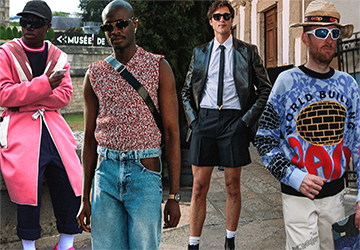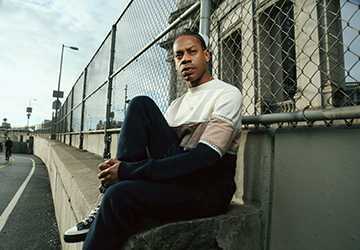The Ever-Changing Landscape of Fashion
Fashion is a form of expression, and its constant evolution reflects the changes in society and culture. While fashion might seem frivolous to some, it holds significant sway in how people present themselves. From high-end designers to street fashion, there are many layers to this dynamic world. But one question always lingers: Who Sets Fashion Trends?
The Role of High-End Designers
It's only possible to talk about trendsetters in fashion by mentioning high-end designers. These creative minds are often the first to introduce new styles and ideas. High-fashion shows act as the launchpad for fresh trends that eventually trickle down to mainstream fashion. Designers like Karl Lagerfeld, Coco Chanel, and, more recently, Virgil Abloh have all played crucial roles in setting trends that define entire seasons if not years.

Celebrity Influence: A Catalyst for Trends
Another significant group that plays a part in setting fashion trends is celebrities. When a famous person wears a unique outfit, it quickly becomes the talk of the town. Social media plays a significant role in this. One Instagram post from a celebrity wearing a new style can set off a chain reaction. This is a modern and potent form of trendsetters in fashion. Celebrities have the power to bring a trend to the masses in a way that high-end designers alone cannot.
The Impact of Street Style
Remember to underestimate the power of everyday people in setting fashion trends. Street style has been growing in influence, and with platforms like Instagram and TikTok, anyone can become a trendsetter. These platforms act as a melting pot where different styles and cultures blend. Therefore, when looking at Who Sets Fashion Trends, we must consider the role of social media influencers and everyday fashion enthusiasts.
How to Follow Fashion Trends: A Practical Guide
Now that we know who sets the trends, the next logical question is How to Follow Fashion Trends effectively. Following fashion doesn't mean unthinkingly copying what you see on the runway or social media. Here are some tips:
Understand Your Style
It's crucial to understand your style before diving into trends. This will give you a framework to incorporate new trends in a way that suits you.
Use Social Media Wisely
Social media is a great tool to stay updated, but it's essential to curate your feed carefully. Follow accounts that align with your fashion sensibilities.
Be Selective
Not every trend will suit your style or body type. Being selective ensures that you adopt trends that complement you.
Experiment with Accessories
Accessories are a less daunting way to incorporate trends into your wardrobe. This could be as simple as a new belt type or more daring like statement earrings.
The Role of Seasonality and Sustainability
Fashion is not just about being trendy; it's also about being mindful of your choices. Seasonal trends come and go, but sustainability is a trend that we should all be following. The rise of ethical fashion brands shows a shift in how people view the relationship between fashion and our world.
The Importance of Cultural Movements in Fashion
The Intersection of Fashion and Activism
Fashion doesn't operate in a vacuum; it often reflects societal and cultural movements. For instance, the feminist movement of the 1960s influenced the popularity of pantsuits among women, defying traditional gender norms. When pondering Who Sets Fashion Trends, it's imperative to remember the role of cultural movements as indirect yet consequential trendsetters in fashion.
The Influence of Music Genres
Have you ever noticed how specific music genres have their unique styles? Punk, hip-hop, and even country music have distinctive fashion elements that become mainstream trends. Artists and musicians are often ahead of the curve and can be excellent guides on How to Follow Fashion Trends rooted in musical culture.

Technology's Role in Fashion Trends
Virtual Fashion: A New Frontier
Technology has permeated every aspect of life, and fashion is no exception. Virtual fashion shows and augmented reality fitting rooms are now becoming a norm. These tech-savvy approaches offer a new channel for designers and brands, further diversifying Who Sets Fashion Trends.
Data-Driven Fashion
Brands are increasingly using big data and analytics to predict what the next big trend will be. This data-driven approach allows companies to respond quickly to market demands, giving them a leg up in setting or adapting to new trends. Therefore, even algorithms play a role in deciding How to Follow Fashion Trends.
Thrift and Vintage: A Counter-Movement
The Thrift Store Revolution
While the fashion industry always pushes for the 'next big thing,' a counter-movement focuses on retro and vintage styles. Thrift stores and vintage shops offer an alternative for those who want to stand out. These spaces have become vital trendsetters in fashion, offering a different perspective on How to Follow Fashion Trends.
The Vintage Appeal
What's old is often new again in the world of fashion. Vintage styles offer a unique look and are a nod to sustainability. Reusing and repurposing older items aligns with ethical fashion, making it trendy to be sustainable.
Global Influences
The Global Melting Pot
In our interconnected world, global styles are merging to create new, exciting trends. Whether it's the Boho-chic inspired by various world cultures or the K fashion wave emanating from South Korea, global influences play a significant role in setting trends. These diverse influences add a new layer to our understanding of Who Sets Fashion Trends.
Conclusion
Who Sets Fashion Trends and How to Follow Fashion Trends are questions with complex answers that involve various players. From high-end designers and celebrities to the everyday person, all have a role in trendsetting. Trendsetters in fashion come from all walks of life, and social media platforms have further democratized this. Finally, following trends should be balanced, incorporating new elements into your existing style while being aware of their impact on the larger world.





